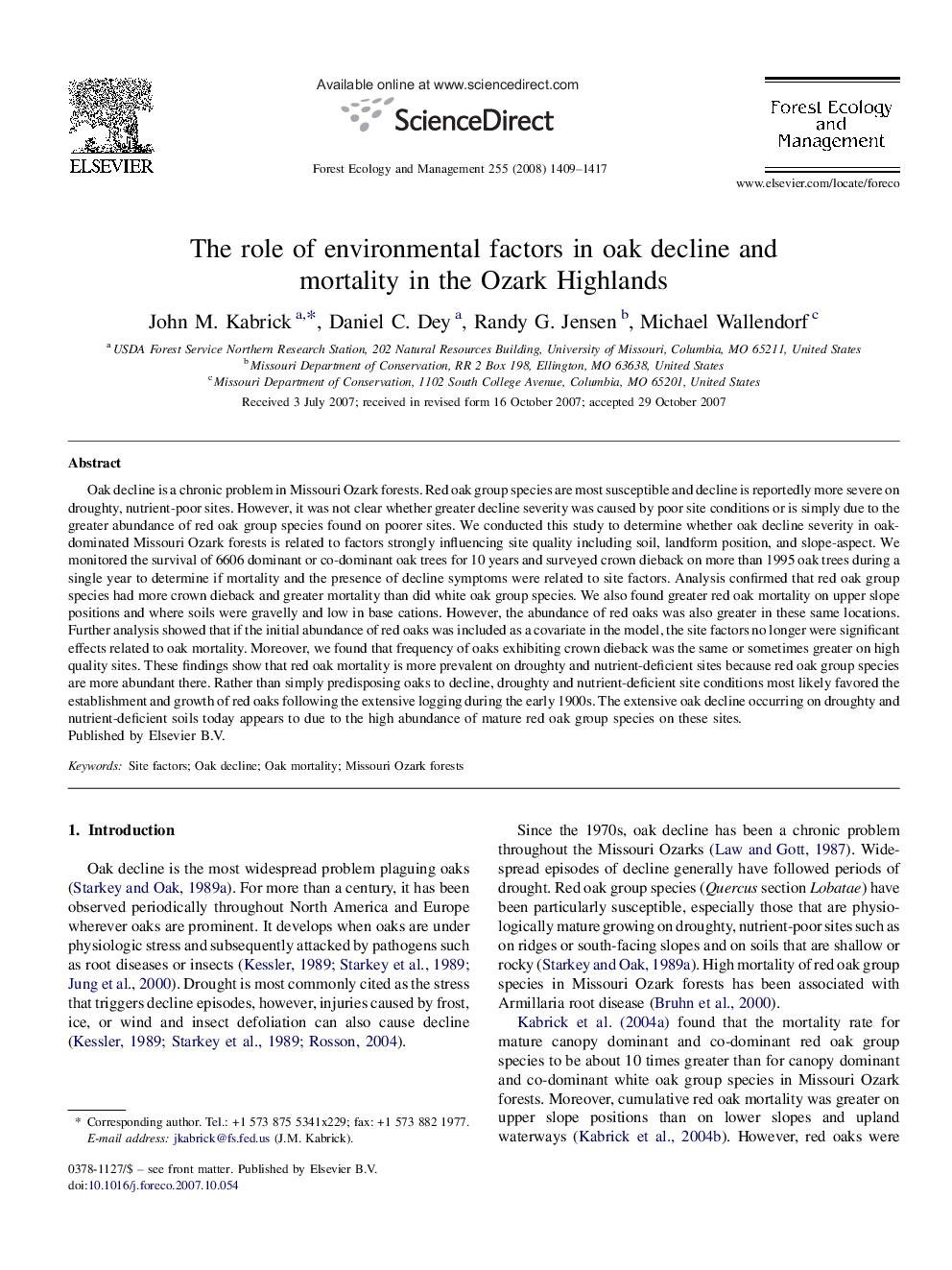| کد مقاله | کد نشریه | سال انتشار | مقاله انگلیسی | نسخه تمام متن |
|---|---|---|---|---|
| 89470 | 159343 | 2008 | 9 صفحه PDF | دانلود رایگان |

Oak decline is a chronic problem in Missouri Ozark forests. Red oak group species are most susceptible and decline is reportedly more severe on droughty, nutrient-poor sites. However, it was not clear whether greater decline severity was caused by poor site conditions or is simply due to the greater abundance of red oak group species found on poorer sites. We conducted this study to determine whether oak decline severity in oak-dominated Missouri Ozark forests is related to factors strongly influencing site quality including soil, landform position, and slope-aspect. We monitored the survival of 6606 dominant or co-dominant oak trees for 10 years and surveyed crown dieback on more than 1995 oak trees during a single year to determine if mortality and the presence of decline symptoms were related to site factors. Analysis confirmed that red oak group species had more crown dieback and greater mortality than did white oak group species. We also found greater red oak mortality on upper slope positions and where soils were gravelly and low in base cations. However, the abundance of red oaks was also greater in these same locations. Further analysis showed that if the initial abundance of red oaks was included as a covariate in the model, the site factors no longer were significant effects related to oak mortality. Moreover, we found that frequency of oaks exhibiting crown dieback was the same or sometimes greater on high quality sites. These findings show that red oak mortality is more prevalent on droughty and nutrient-deficient sites because red oak group species are more abundant there. Rather than simply predisposing oaks to decline, droughty and nutrient-deficient site conditions most likely favored the establishment and growth of red oaks following the extensive logging during the early 1900s. The extensive oak decline occurring on droughty and nutrient-deficient soils today appears to due to the high abundance of mature red oak group species on these sites.
Journal: Forest Ecology and Management - Volume 255, Issues 5–6, 5 April 2008, Pages 1409–1417